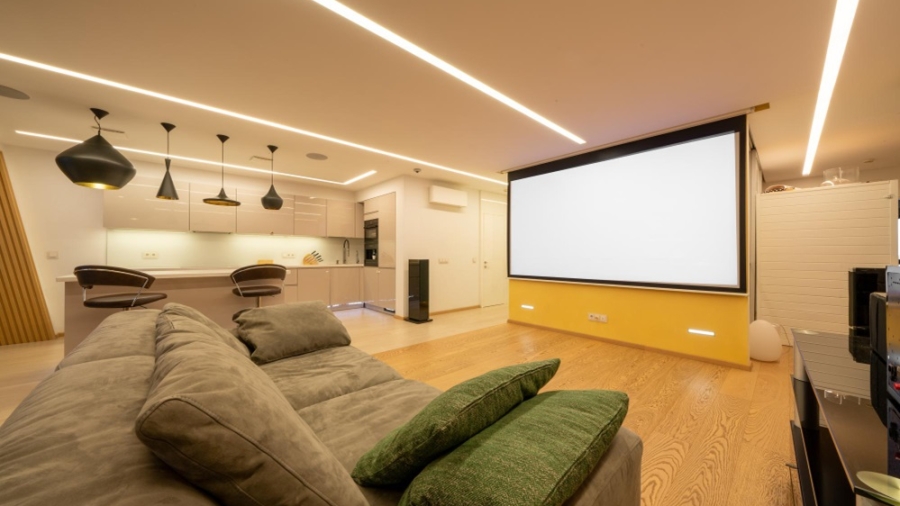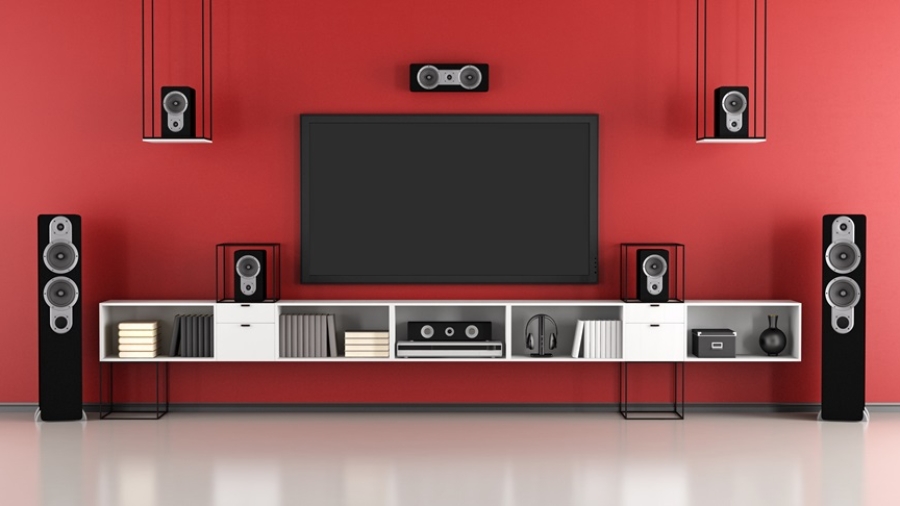How to Design a Home Theater
Are you wondering how to design a home theater for the best audiovisual experience? You’ve come to the right place. A home theater project offers an immersive entertainment experience in the comfort of your own home. Choosing the right components is essential for creating the best cinematic journey. Each choice, from audio systems to display options, influences the overall quality of your home theater setup.
Home entertainment experts from Ambrosic Home Theater Designs, LLC, give you a detailed guide on how to design a home theater. We will look at the essential components of a home theater and give you this helpful insight to help you create a setup that meets your needs and budget. Ambrosic Home Theater Designs, LLC is a pillar in the home entertainment industry, installing the best home theater for South Carolina residents. Connect with their professional home theater designers and have the best home entertainment that suits your style and needs.
Want to Know More About Home Theater Design?
Contact Ambrosic Home Theater Designs, LLC
What Are the Components of a
Home Theater?

Audio Systems
Choosing the correct audio system is critical to reproducing the rich and powerful sound experienced in commercial theaters. Surround sound systems, such as 5.1 or 7.1 setups, provide viewers with a three-dimensional aural experience. Channels devoted to diverse audio aspects guarantee that conversation, ambient noises, and special effects blend harmoniously.
Nowadays, most homeowners also use advanced audio technologies in their home theater. Consider Dolby Atmos and DTS:X technologies to enhance your audio experience further. These advancements provide height channels, which allow sounds to travel in three dimensions, resulting in a more realistic and immersive audio environment. Investing in speakers enabling these technologies ensures that you are viewing and experiencing a movie.
How to design a home theater to achieve the best sound dispersal? It is advised that speakers must be strategically placed. The center speaker should be positioned below or above the screen. The rear speakers responsible for ambient and background noises should be located behind the seating area. Calibrating speakers ensures they function together seamlessly, resulting in well-balanced audio throughout the space.
Visual Display
Regarding presentation, you may choose between a television and a projector based on room size and personal desire. While high-quality large-screen TVs are appropriate for smaller rooms, projectors provide a more cinematic experience with their larger-than-life projections. Consider ambient light, screen size, and resolution when making this selection.
Meanwhile, image clarity is highly dependent on the resolution of your monitor. A 4K display is best suited for more extensive displays or shorter viewing distances, as it produces clear and detailed pictures. However, if you have a limited budget, 1080p televisions still provide good image quality. To discover the best match for your home theater, balance your need for resolution against practical factors.
A more realistic image may be achieved by using High Dynamic Range (HDR) technology to boost your display’s color and contrast. When you need clarification about how to design a home theater, ensure your monitor supports HDR for the best viewing experience. Consider the refresh rate, mainly if you are an ardent gamer, since greater refresh rates lead to better action on-screen.
Media Players and Streaming Devices
Choosing the correct media player or streaming device is critical for accessing various material sources effortlessly. If your display is high resolution, be sure your selected device supports your preferred streaming services and that 4K content is available.
Audio-Video Receivers
The AV receiver is the hub that connects all your audio and visual components. Ensure it has enough HDMI ports to fit your devices while supporting the most recent 4K video and HDR standards. Consider the power output to ensure the receiver is compatible with your speaker arrangement and can adequately run your selected audio system.

Comfortable Seating
While not directly connected to audio or visual components, comfortable seating is an essential feature of a well-designed home theater. Choose seating that compliments the room’s decor and provides ergonomic support for extended viewing sessions. Recliners or specialized home theater chairs with built-in cup holders and storage compartments elevate your movie experience.
Control Systems
Using a control system makes it easier to operate your home theater components. Universal remote controls, often known as smart home automation systems, make it simple to handle many devices while minimizing the clutter of several remotes. It not only improves convenience but also adds to the overall attractiveness of your home theater by reducing visual distractions.
Room Acoustics
Room acoustics are sometimes underestimated but critical in the home theater experience. Acoustic panels, carpets, and drapes can help to reduce sound reflections and echoes. How to design a home theater in terms of room acoustics? Experiment with furniture and décor arrangement to establish a balanced sound profile, reducing unpleasant distortions and improving the viewing and listening experience.
Component selection is an art form in the complicated realm of home theater design. The answer to how to design a home theater is balance. A precise balance of audio and video components, comfortable seating, and intuitive control systems may make your living room a cinematic haven.
Frequently Asked Questions
What Considerations Should I Make While Planning a Home Theater?
The considerations you should make while planning a home theater include room size, seating arrangement, budget, audio and visual choices, and overall style. Consider if you prefer a dedicated theater room or a versatile media room.
What Screen Size Is Optimal for My Home Theater?
The best screen size depends on your viewing distance and preferences. For an immersive experience, adjust the viewing angle to 30 degrees. Measure the distance between your seating area and the screen and use the angle to determine the best screen size.
How Significant Are Room Acoustics in Home Theaters?
Room acoustics are critical in a home theater setup. Good acoustics eliminate sound reflections, echoes, and distortions, creating a balanced, immersive audio experience. Add acoustic panels, rugs, and draperies to your home theater for better acoustics.

Home Theater Design in Hilton Head Island
Designing a home theater is a pleasurable experience when you work with a highly competent business like Ambrosic Home Theater Designs, LLC. We have years of expertise designing home theaters that meet our clients’ specifications and tastes. We will work with you to ensure your happiness from the first consultation to installation. Please contact us immediately if you have any queries about our services or want to set up a free consultation! We provide home theater designs in the following areas: Hilton Head, Sea Pines Plantation, Bluffton, SC, Berkeley Hall, Colleton River, and Palmetto Bluff.
Contact Ambrosic Home Theater Designs, LLC
At 843-338-5084 Now
Ambrosic Home Theater Designs, LLC
35 Wood Duck Court
Hilton Head Island, SC 29928
843-338-5084





